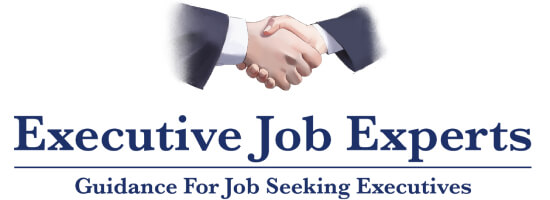If you’re not visible on LinkedIn, you’re invisible to opportunity. At the executive level, your LinkedIn profile isn’t just a digital resume — it’s your public brand, reputation, and network rolled into one.
Whether you’re actively job searching, open to board roles, or building influence in your field, a strong executive LinkedIn profile can unlock doors that never appear on job boards.
Here’s how to optimize your profile for credibility, visibility, and leadership presence in 2025.
1. Start With a Clear, Impactful Headline
Your headline shouldn’t just be your current title. It should:
- Communicate your value
- Include keywords for SEO
- Show where you’re headed next
Good executive LinkedIn headlines:
- “Transformational CFO | Driving Growth, Profitability & Scalable Finance Operations”
- “Tech Executive | SaaS Growth Strategist | VP of Product | Startups to Public Companies”
- “Global HR Leader | Culture Architect | Diversity Champion | CHRO | Fortune 500 + Startups”
Avoid vague titles like “Experienced Executive” — this is prime real estate. Make it work for you.
2. Use a Professional Photo and Background Banner
Your photo doesn’t need to be overly formal, but it should be:
- High-resolution
- Clear and well-lit
- Confident, approachable expression
- Ideally, you in business attire or something fitting your industry
Banner tip: Use the background image to reinforce your personal brand — whether that’s your company’s skyline, a speaking engagement photo, or a custom design with your values or tagline.
3. Write a Powerful, Story-Driven “About” Section
This is your executive bio. It should cover:
- Your leadership philosophy
- Career highlights
- Industries you’ve worked in
- What you’re passionate about or known for
- What you’re looking for (if you’re open to opportunities)
Structure idea:
- First 2–3 lines = hook and summary (these are visible without clicking “see more”)
- Paragraphs or bullets = key achievements and values
- End with a call to action (e.g., “Let’s connect if you’re hiring a growth-minded COO.”)
Keep it authentic. Great executive LinkedIn profiles sound human — not like marketing brochures.
4. Optimize for Keywords — Without Stuffing
To show up in recruiter and board searches, your profile should naturally include keywords like:
- “Executive leadership”
- “P&L ownership”
- “Digital transformation”
- “SaaS growth”
- “Global operations”
- “Board member” or “Strategic advisor”
Include them in your:
- Headline
- About section
- Skills list
- Experience bullet points
Don’t overdo it — aim for natural placement that reflects your real experience.
5. Refine Your Experience Section Like a Leadership Resume
Don’t just list responsibilities. Use bullet points to highlight:
- Key business impact
- Size of teams or budgets managed
- Strategic initiatives led
- Notable accomplishments or turnarounds
Example:
Senior Vice President, Marketing | Global B2B SaaS Firm
- Led $25M global marketing budget and a team of 40 across 4 regions
- Increased qualified pipeline by 300% in 18 months via ABM strategy
- Rebranded company post-acquisition, driving 22% YoY revenue growth
Keep it results-driven, but tailored to a LinkedIn reader — think clarity over corporate speak.
6. Customize Your LinkedIn URL
Change your LinkedIn URL from the random default to something professional and memorable, like:
- linkedin.com/in/johndsmith
- linkedin.com/in/susan-chang-coo
This makes it easier to share and looks cleaner on resumes, business cards, and email signatures.
7. Use the “Open to Work” Feature Strategically
If you’re actively looking for a new role:
- Use the “Open to Work” setting (visible only to recruiters, not the public)
- Specify your target titles, locations, and job types
This helps you show up in more recruiter searches — especially if your desired title doesn’t match your current one.
8. Add a Featured Section
This is a powerful (and underused) part of the profile where you can showcase:
- Media appearances or interviews
- Thought leadership articles
- PDF case studies or executive portfolios
- Links to company projects or board memberships
Think of it as a curated highlight reel for your leadership brand.
9. Get Endorsements and Recommendations
Social proof matters. Ask former colleagues, team members, or board peers for LinkedIn recommendations that speak to:
- Your leadership style
- Strategic impact
- Industry expertise
- Culture-building skills
Even 3–5 strong testimonials can go a long way in reinforcing credibility.
Also, make sure your top skills (e.g., strategic planning, M&A, organizational leadership) are endorsed and ranked at the top.
10. Be Active — But Strategic
You don’t need to post daily, but consistent engagement builds visibility and trust.
Do:
- Comment meaningfully on industry news
- Share insights from your experience
- Repost relevant content with a personal take
- Follow thought leaders and companies you admire
Don’t:
- Post for the sake of it
- Oversell yourself
- Be overly formal — your voice should feel real
Active executives are more discoverable and more credible.
Bonus: Add Board & Advisory Roles
If you’ve served on boards or acted as a strategic advisor, give those roles their own entries in your Experience section.
Example:
Non-Executive Director | FinTech Co. (2022–Present)
- Provide strategic guidance on go-to-market and capital planning
- Serve on Audit & Risk Committee
- Contributed to 18% YoY revenue growth during Series B transition
This helps you attract additional opportunities — especially with startups, private equity firms, or nonprofits.
Final Thoughts
Your executive LinkedIn profile is often your first impression — even before your resume. It’s where recruiters, investors, peers, and hiring managers go to understand who you are as a leader.
Make sure it tells the right story.
Whether you’re actively job hunting or just open to what’s next, a strong LinkedIn profile sets you apart and keeps your career moving forward.

